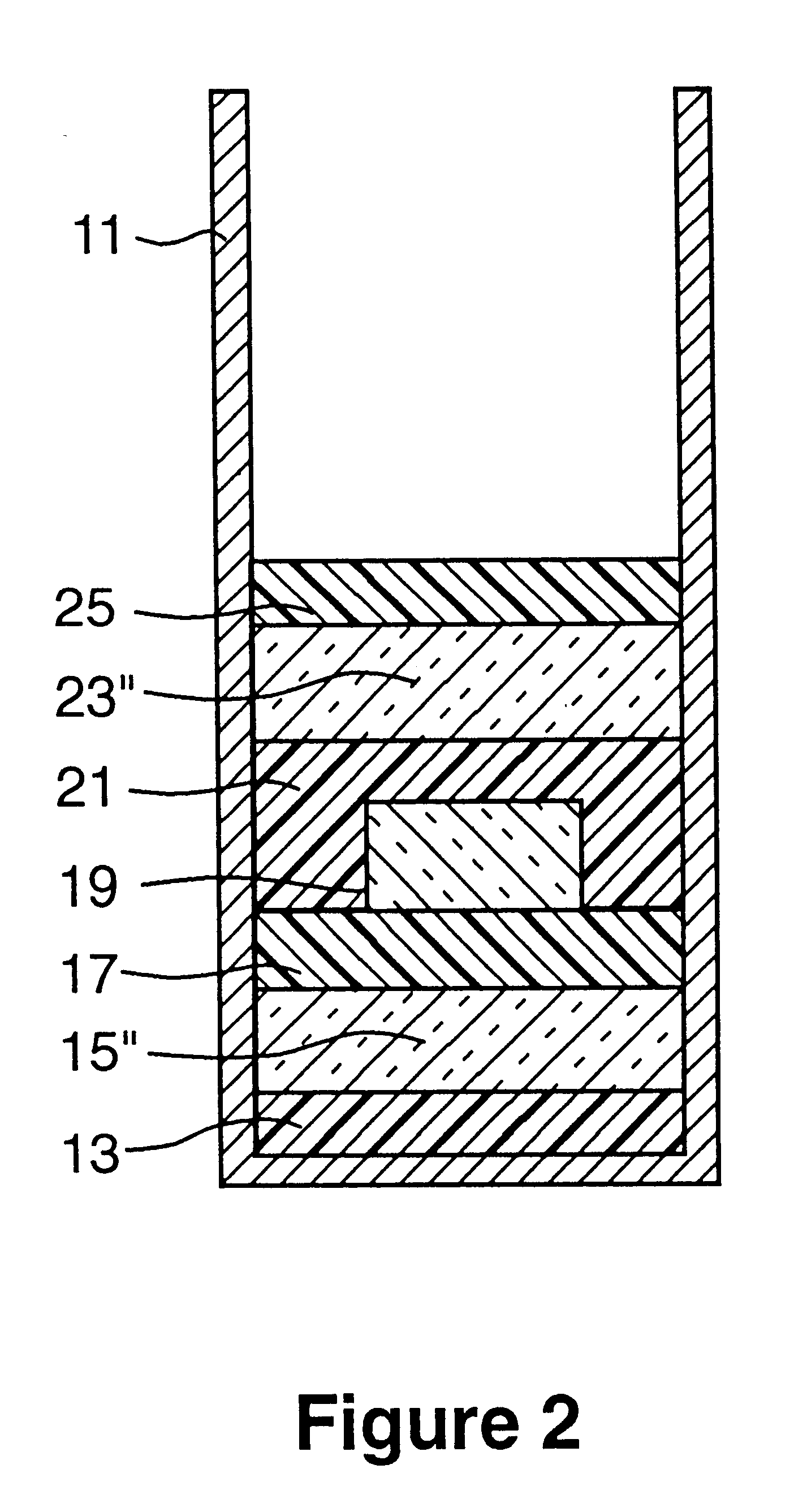Polymer gel molds
a technology of polymer gel and molds, which is applied in the field of polymer gel molds, can solve the problems of high cost involved in preparing machined molds, many rigid mold materials are unsuitable for gelcasting, and many rigid mold materials are prone to problems, etc., and achieves the effect of not prone to problems, easy to manufacture, and inexpensive and easy to manufactur
- Summary
- Abstract
- Description
- Claims
- Application Information
AI Technical Summary
Benefits of technology
Problems solved by technology
Method used
Image
Examples
example ii
A solution comprising 50 grams 48% HMAM solution, 10 grams H.sub.2 O, and 5 grams polyethyleneglycol 400 (PEG 400) was used to cast a negative mold of a steel gear centered inside an aluminum puck mold. The solution was accelerated with TEMED and APS and gelled at room temperature in 15 minutes. The resulting gel mold was removed from the gear and used to mold a gelcasting composition. A gelcasting slurry of 55 volume percent solids loaded aluminum oxide in a solution of 20% HMAM in H.sub.2 O was accelerated with TEMED and APS and cast into the gel mold. The mold was placed in a closed container to prevent _drying out the gel and then heated at 60.degree. C. in an oven for 15 minutes to gel the loaded slurry. The resulting gelcast gear was freed from the mold and dried. There was no inhibition of gelling at the mold slurry interface and the mold did not adhere to the gear, which retained the exact shape of the steel gear, with no imperfections visible to the naked eye.
example iii
A solution comprising 15 grams of agar and 485 grams of H.sub.2 O was used to cast a mold of a metal gear. The gear was heated to 60.degree. C. prior to the introduction of the agarose solution. The mold was allowed to cool and the metal gear was removed. The cast agarose mold had no visible defects. A gelcasting slurry of 55 vol. % alumina-loaded MAM / MBAM 6:1 solution was cast into the agarose gear mold and gelled at 60.degree. C. The ceramic gear formed thereby was free of defects and exhibited a surface finish comparable to a finish derived from a glass or highly polished metal mold. The mold survived the temperature excursion of the gelling step but was destroyed during removal of the gelcast gear.
example iv
A series of gel molds are fabricated as described in Examples I, II, and III. The molds are filled with various flowable compositions: plaster, a conventional Portland cement-based composition, and a calcium aluminate-based composition. The flowable compositions are allowed to set according to conventional methods. The set parts are removed from the gel molds and dried according to normal procedures.
PUM
| Property | Measurement | Unit |
|---|---|---|
| diameter | aaaaa | aaaaa |
| temperature | aaaaa | aaaaa |
| water-soluble | aaaaa | aaaaa |
Abstract
Description
Claims
Application Information
 Login to View More
Login to View More - R&D
- Intellectual Property
- Life Sciences
- Materials
- Tech Scout
- Unparalleled Data Quality
- Higher Quality Content
- 60% Fewer Hallucinations
Browse by: Latest US Patents, China's latest patents, Technical Efficacy Thesaurus, Application Domain, Technology Topic, Popular Technical Reports.
© 2025 PatSnap. All rights reserved.Legal|Privacy policy|Modern Slavery Act Transparency Statement|Sitemap|About US| Contact US: help@patsnap.com



